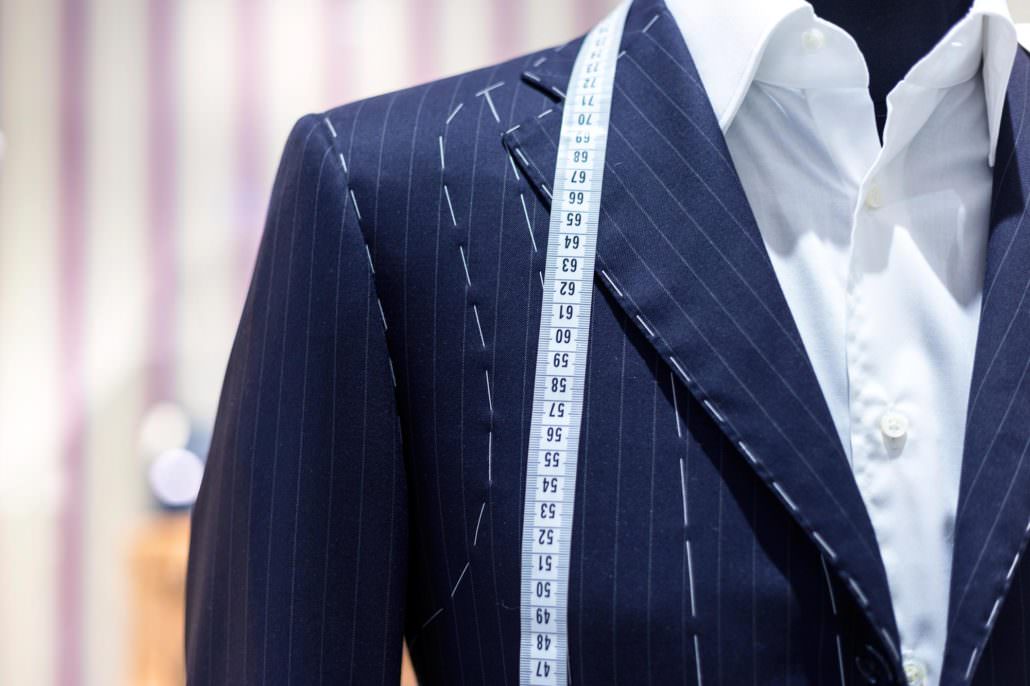
A bespoke suit boosts your confidence and elegance
Bespoke tailoring is the pinnacle of men’s attire in terms of customization, time commitment, and cost. In today’s article, our resident expert in bespoke tailoring and author of the influential The Gentleman book, Bernhard Roetzel, will share the basics of why bespoke is worth the money and how to get started.

A bespoke suit boosts your confidence and elegance
The term “bespoke” is often abused not just by the clothing industry, but many other industries as well. Since the term conveys the highest level of quality in terms of material and construction, it is coveted for marketing purposes in ways that have diluted the meaning of “bespoke” over time. Let’s start with the proper definition of bespoke tailoring so that you know the real thing when you see it.
Bespoke tailoring is a traditional way of making clothes by hand on the basis of an individual pattern. A pattern is the construction plan for the different parts of a garment created with body measurements, which take into consideration the unsymmetrical shape of the human form. This means that a tailor will measure the circumference of the chest, the waist, the back, and the seat, as well as the length and circumference of both legs and arms. He will also find the exact position for the armholes and the degree of slope of the shoulders. In addition, he or she will check the front and the side balance, meaning he will notice whether the customer is bent forward, whether he has a very upright position or a very rounded back.
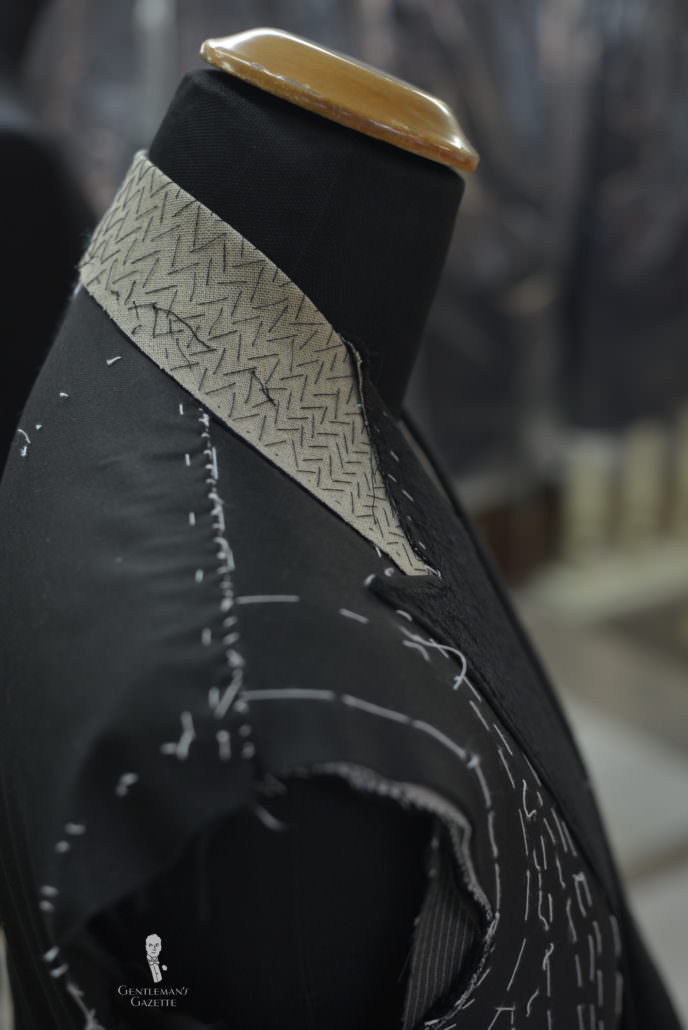
Bespoke jacket collar under construction
All these measurements and observations of peculiarities of the figure (that everyone has) will be used to draw the pattern of the garment which is usually started by drawing a vertical line on a piece of brown paper. This vertical line represents the back seam of the jacket. This line will be slightly curved to follow the shape of the customer’s back from his neck down to his seat. The opening sequence of the movie The Tailor of Panama shows how a tailor drafts a pattern; it is worth watching this film just to see that.
Based on the abuse of the term bespoke, how can you be sure an offering is proper bespoke tailoring? It’s not unusual that companies will offer “custom” clothing or even outright sell bespoke clothes that are in fact made-to-measure. A real bespoke tailor will usually make his clothes in a workshop that is located on his premises, and you will very likely work directly with the tailor doing the work. Every true bespoke tailor will be happy to show you where his clothes are made, and he should demonstrate a thorough knowledge of his craft. Be careful if a producer doesn’t allow visitors in his workshop, his facilities are far away, or if someone other than the tailor manages client interactions and measurements.
Made-to-measure clothes (which you will see referred to as “MTM”) are similar to bespoke clothes because they are also made individually according to the customer’s measurements. However, instead of creating a pattern from scratch, a shortcut is taken by altering an existing ready-to-wear pattern. In many cases, the result will be satisfactory because, in theory, it is possible to adapt an existing pattern to the most common irregularities of the figure. More affordable MTM clothes are made in factories like ready-to-wear garments but some companies make MTM clothes by hand. Even a handmade MTM product is not the same as a bespoke garment because an MTM suit is created by adapting an existing suit model to the figure. This means that the MTM suit will look like the suit that a designer has created for the MTM brand. A bespoke garment will be designed exclusively for one person by the tailor and the customer, and all details can be changed according to the buyer’s taste.

Immaculate pattern matching is often a hallmark of bespoke garments
Sometimes shop assistants try to pass off an MTM product as a bespoke garment, though not necessarily with bad intentions. Shop assistants may not be aware of the differences, but one quick question will easily help you distinguish the pretenders from the real bespoke makers: ask for fittings. Bespoke tailors will test the fit of the garment at fittings several times, while no fittings are performed by MTM companies. They simply take the measurements and then deliver the final garment based on those measurements.
There is no rational reason to order bespoke clothes because most of us can find clothes off the rack or MTM that fit relatively well. Some men prefer vintage clothes that were once made for someone else but may fit well. The best reason for bespoke clothes is that is great fun and also exciting to have something made by hand for oneself. It is less a luxury but rather a unique way to experience an old craft that has been part of our culture since the middle ages. Having something made by a bespoke tailor is like commissioning a chest of drawers from a carpenter or ordering cufflinks from a jeweler. It is simply a wonderful experience that most men who love clothes will enjoy. Finally, it is an opportunity to own something that is designed and created just for you. You’ll never run into another man wearing the same piece!
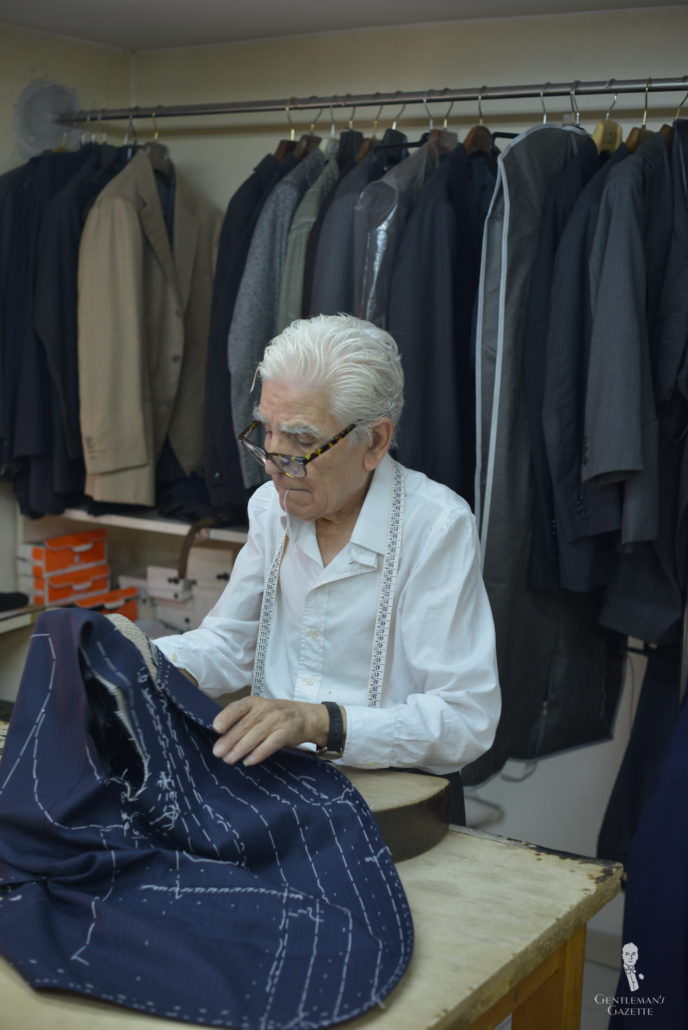
Tailoring a jacket
The majority of men consider bespoke tailoring as something totally out of the question for themselves. Even those whose interest in clothing and style goes beyond the average degree might not consider bespoke tailoring. The main reason is probably the cost of bespoke clothes. But why are men with the means to afford bespoke clothes hesitant? I believe that men are scared of having to make decisions and choices about a product that is not visible or tangible. That is why made-to-measure clothes are so popular. You get a good idea of the final result before you commit because in most cases finished garments are on display and you are able to try on sample garments. Another rather safe option are bespoke suits from well-known tailoring houses with a clearly defined look. If you order a Cifonelli suit you will end up with something very similar to what you see in their marketing images; it will be adapted to your figure but clearly cut along well-known lines. The same applies to suits from most tailors in Italy or Savile Row. But is this really what bespoke tailoring is about? Is it not about getting something really individual? It is indeed. But most men order bespoke suits for businesswear, only very few want something eccentric or theatrical. This is why most bespoke suits look very classical.
The PROs and CONs of Bespoke Clothing
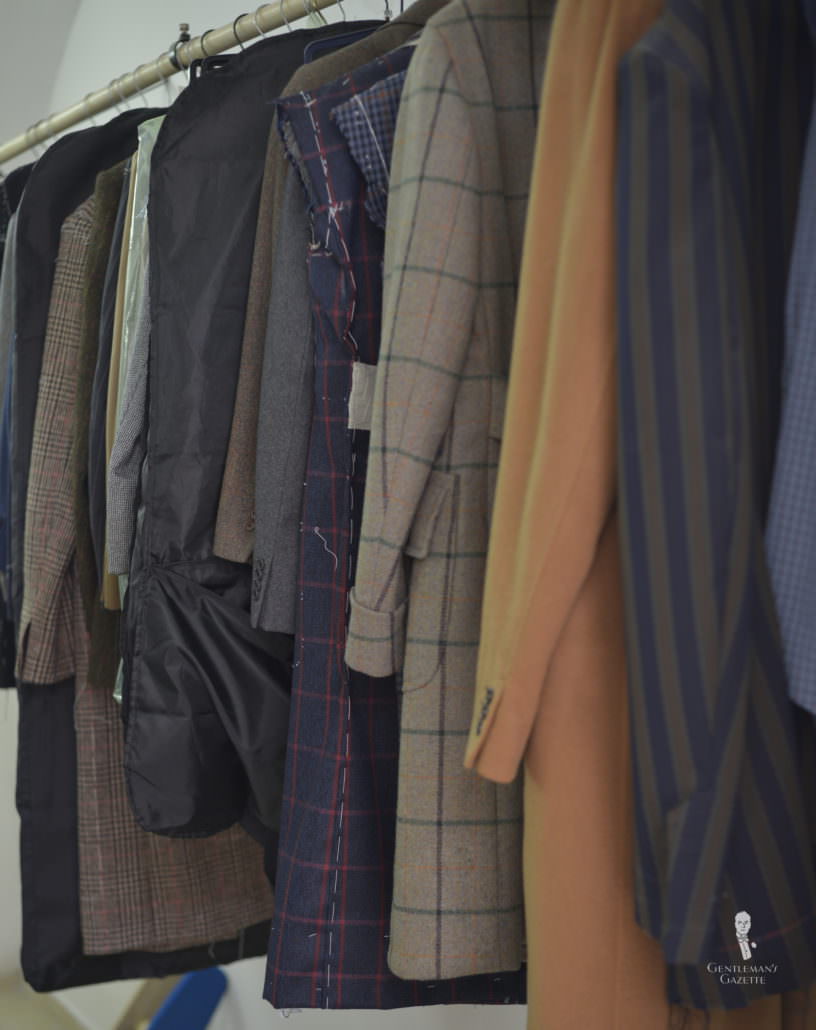
Bespoke tailoring in process; note the interesting patterns and cuts
First of all, you should make up your mind about what the desired garment should look like. Most men will opt to have a suit made, but you can also choose a single jacket, an overcoat, or a pair of pants if you have something special in mind. The more someone knows about his own taste and preferences, the easier the choice will be. Consider all the details you would like – the cut, the fabric, the structure of the garment, etc.
In most cases, men either like English style or some sort of Italian style. For more detail on how the different bespoke styles are defined, please take a look at our History of Bespoke Tailoring: Then and Now guide for more information. That being said, creating a bespoke garment with a tailor should be about getting what YOU want. If your tastes line up neatly with the English or the Italian styles, then working with a tailor that favors that style makes sense.
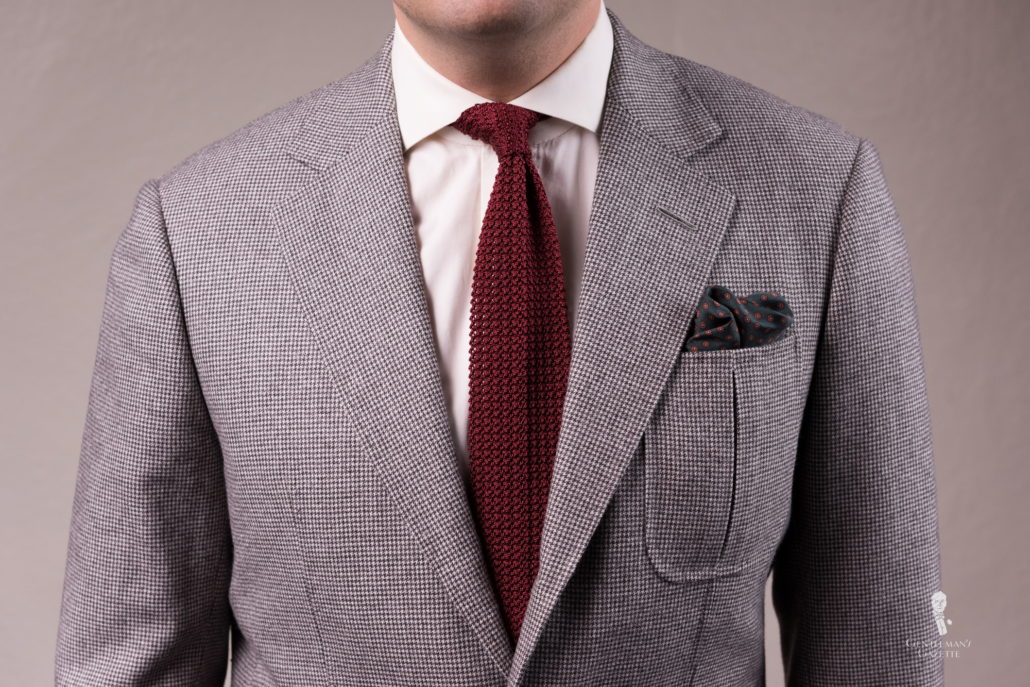
With bespoke, you can choose every detail from the lapel (notched or peak? narrow or wide?) to the smaller details such as pockets, like these expandable patch pockets
In general, it is very important to know what you want and communicate clearly. The more information the tailor gets, the better, provided he is capable and willing to adapt to your wishes. In many cases, tailors will nod while you speak but will produce a garment at the first fitting which is very different from what you expected. If you are not able or willing to describe your wishes precisely you should use a tailor that is known to make garments in a style that you like.
Just because you are having a bespoke garment made does not mean that you must have an endless amount of cash. Nevertheless, bespoke clothes made in the traditional way are always more expensive than any other type of clothes. You must make up your mind if you really want to spend the money and the time on top. The cost of travel can be huge over the years unless you can do the fitting on business trips that are paid for by your employer. A local tailor may be less prestigious than having one in Savile Row but he may be just as good and you will save a lot of money and time.

Alexander Amann – Bespoke Tailor
Once you have made up your mind about the style you want, you could then look at tailors from London or Italian towns like Milan, Rome, Florence, Bergamo or Naples. Many tailors can be found on the Internet, for instance on Instagram. But what do you do if the tailor who makes the suits you like best can be found in Verona, Italy while you live in Oklahoma, Arkansas, California or New York City? Or any other part of the world but not anywhere near Italy or Europe? Bespoke tailors can be found almost in every country and most are either influenced by English or Italian tailoring.
A friend of mine has worn suits made Kiton and Attolini for 25 years until he decided to give bespoke tailoring a try. When he asked me to recommend a tailor I named two or three companies from Naples and he finally ended up with Gennaro Solito. Today he is very happy with this choice. This case was easy because we both knew what style my friend prefers. Many men don’t have such a clear preference.
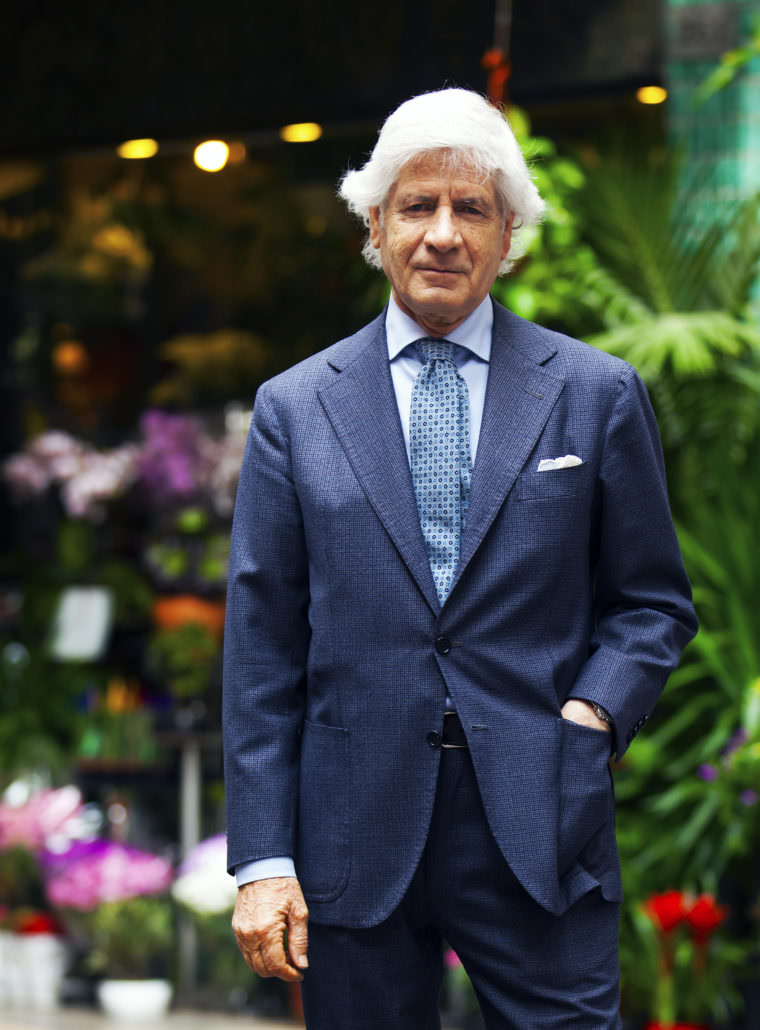
Gennaro Solito, Neapolitan tailor
Communication is very important during the whole process of bespoke tailoring. Even if someone speaks the same language as the tailor he may find that it is not easy to express precisely what he wants. Even more so when you deal with tailors who speak another language that you either do not speak at all or only to some degree. Most tailors will speak at least some English. So be prepared to bring images of sample garments to help you explain your wishes. Or bring a translator who knows about tailoring, unless you are prepared to hand yourself over completely to a tailor who’s style you like or who was recommended to you.
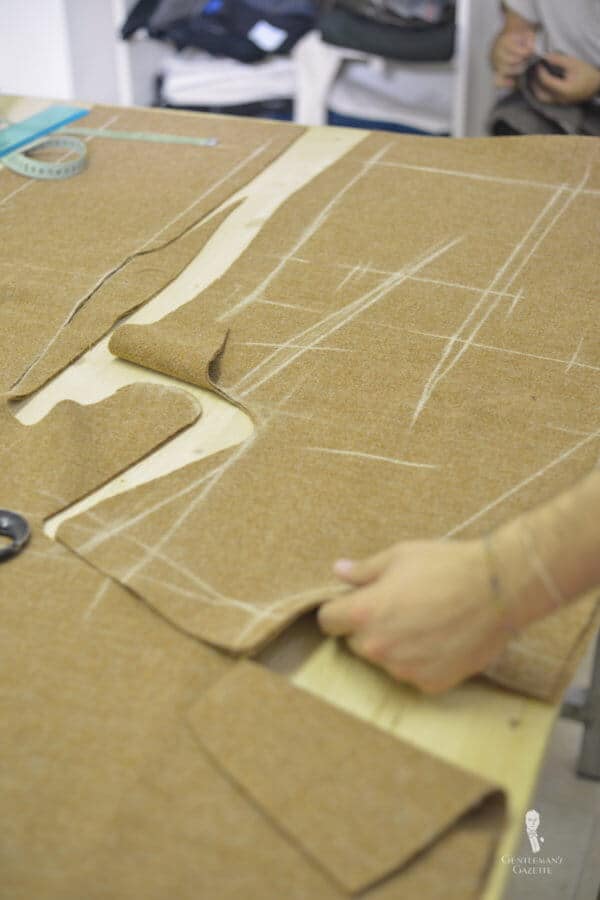
Handmade pattern for a bespoke suit
Most bespoke tailors will do two fittings; very few will do only one fitting if their existing patterns works well. The fitting gives the tailor and the customer the chance to see how the garment is developing and what additional alterations need to be made. At the first fitting, pockets are usually not cut in the cloth yet but darts usually are. No buttonholes are made and very often the sleeves will still be missing. Continental European tailors will do the fitting with no sleeves or only one sleeve while English tailors usually do it with both sleeves.

Bespoke jacket in the making – without darts or sleeves
Tailors in Germany, Austria, and countries of middle Europe will usually open the shoulder seam in order to pin it together following the shape of the body. English tailors do this rarely and only if really necessary. The tailor will mainly check proportions and balance while the customer wants to see if the tailor is on the right track; the garment could be changed fairly radically at this stage.

At Cifonelli fitting for a suede jacket
The first fitting is in fact meant for the tailor and not for the customer. Nevertheless, the customer will be eager to see the garment at this rough stage because up to the moment when he slips into it he has no idea whether the tailor can deliver what he wants. In very rare cases the customer realizes at this stage that he has made a wrong decision by ordering a double-breasted garment. It is possible to do single breasted instead at this stage. Even the opposite is possibly provided that new front pieces are made with additional cloth. The pants are made with a linen waistband which will be replaced by the waistband made of the chosen cloth after the fitting. The trousers usually have no buttons or hooks at this stage, the tailor will fasten them with a needle.
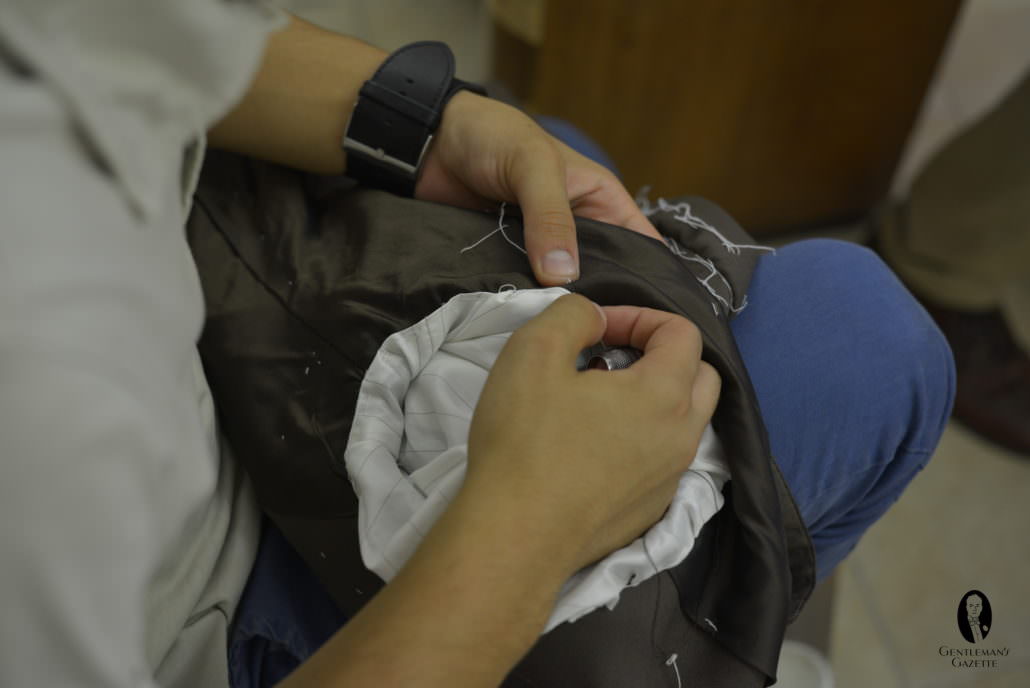
Hand stitching the sleeve lining at the shoulder
After the first fitting, the garment will be taken apart. The cutter will then improve the cut either by making small improvements here and there or by recutting the jacket in a more fundamental way. Usually, only minor changes are necessary like changing the width of shoulders, tightening the waist or correcting the overall length. Pockets will now be cut while the buttonholes will still not be cut open. This is important otherwise adjustments of the balance could lead to the buttons on the front not matching the buttonhole. The lining will now be added and trousers will usually be finished for the second fitting with buttons, hooks and the fly.
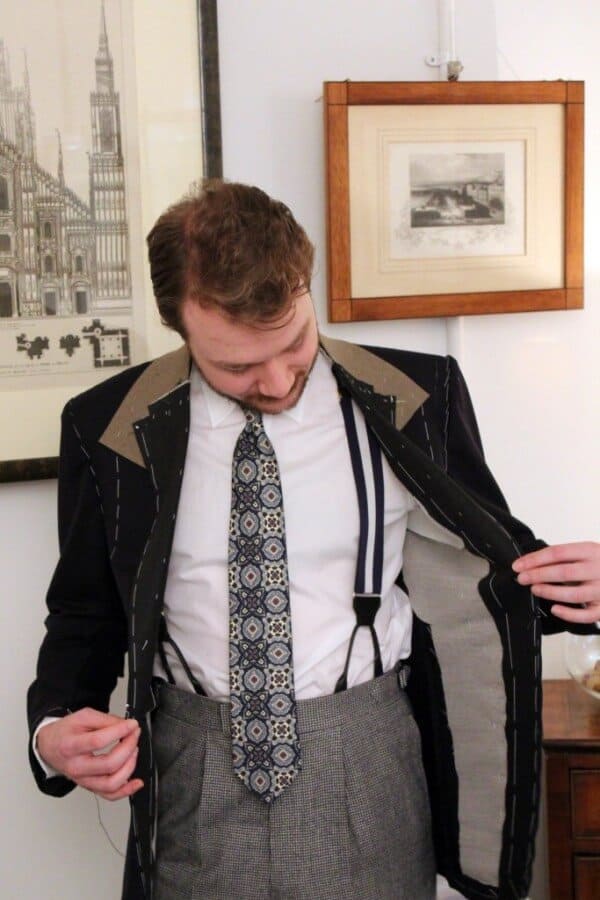
Fitting with Pope Bradley
At the second fitting sleeves will be added if they had not been part of the first fitting. At the second fitting, the garment has reached a very advanced stage. Fundamental changes would now be very time-consuming because the lining would have to be removed. Nevertheless, it is possible to do alterations but at this stage tailor and customer should both have the same idea of the direction they want to take with the suit. Tailors in Savile Row will have finished the pants for the second fitting if the first fitting went well. Tailors from the continental European tradition will finish the pants after the second fitting.
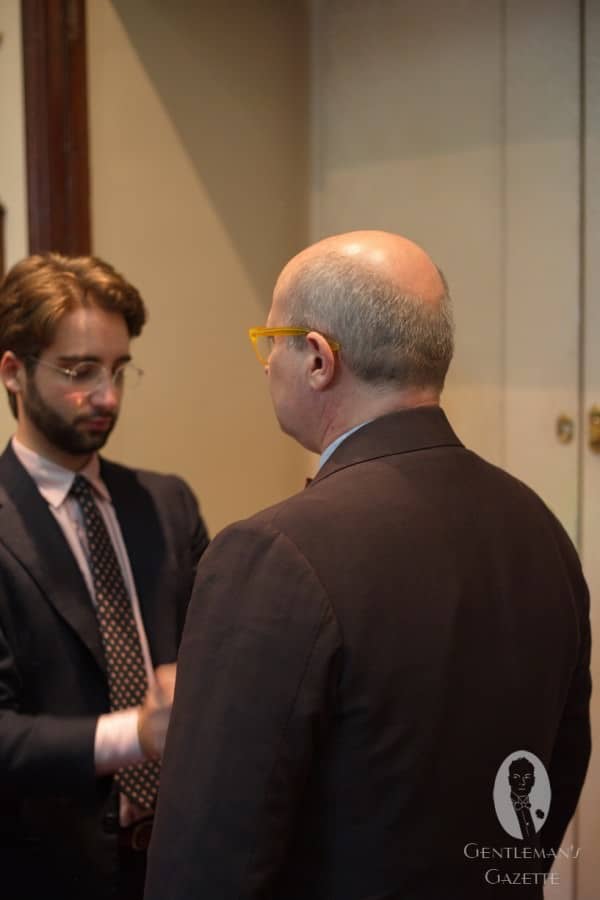
The final fitting for Giancarlo Maresca‘s new suit
It will take weeks or even months to finish the suit depending on the amount of work that the tailor has to complete. Finishing is very time consuming because a lot of very precise stitching is required, such as hand sewing the lining. All buttons holes need to be finished by hand including those of the fly if it is not made with a zip.
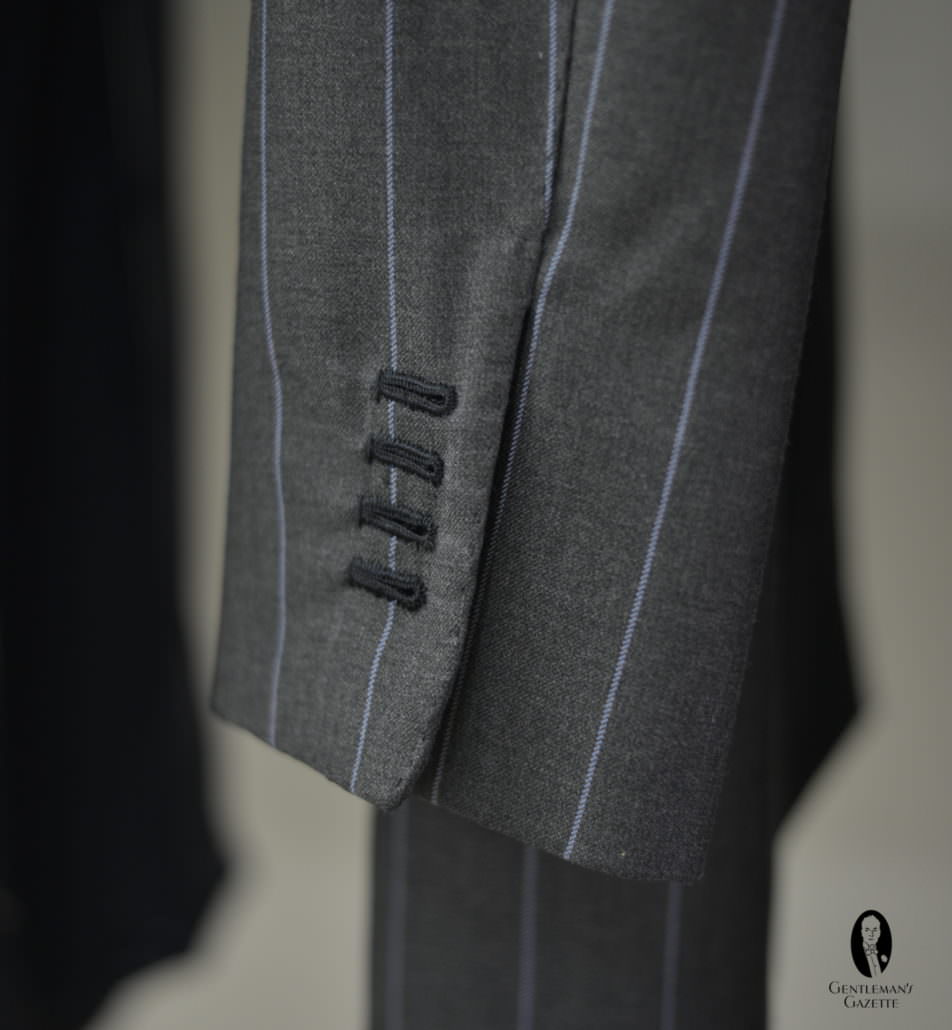
Beautiful buttonholes
Finishing also includes the final pressing. Tailors who produce for remote customers will very often deliver the finished garment in a box but usually, tailors are more happy to see the suit on the customer one more time. The finished suit may need small alterations despite the second fitting. It happens rather frequently that the length of sleeves or pants is not correct which is no big deal if the customer calls personally to collect the suit but rather annoying when he lives 5000 km away.
The key to successful bespoke tailoring is to know what you want and communicate it well. It’s best to wait to engage a bespoke tailor if you are not sure what you want. Don’t order something if you are not sure if the tailor understands or if you don’t really like him. Working with a tailor that you are not comfortable with is not enjoyable.
It is reasonable to expect a lot after laying out many thousands of dollars, but don’t forget that bespoke tailors cannot work wonders. They are craftsmen but they are not magicians. Many factors will influence the final product, such as the material you chose, your posture, and the degree of experience the tailor has. The more you learn about bespoke tailoring, the easier and more enjoyable the process will be!
What bespoke garments have you had made? What is on your bespoke wishlist?
Labels: Gentleman's Gazette